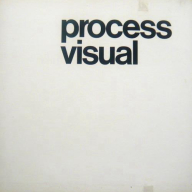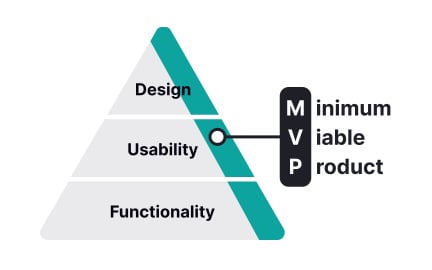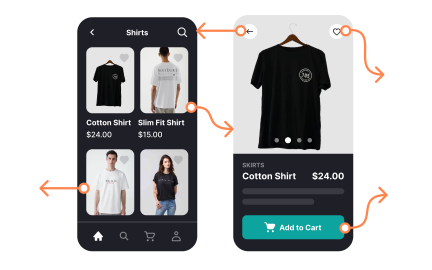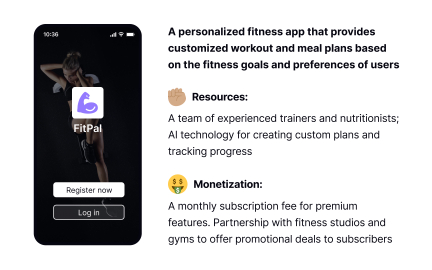Minimum Viable Product (MVP)
A minimum viable product (MVP) is a simplified version of a product built with core features to test user demand and gather feedback quickly.
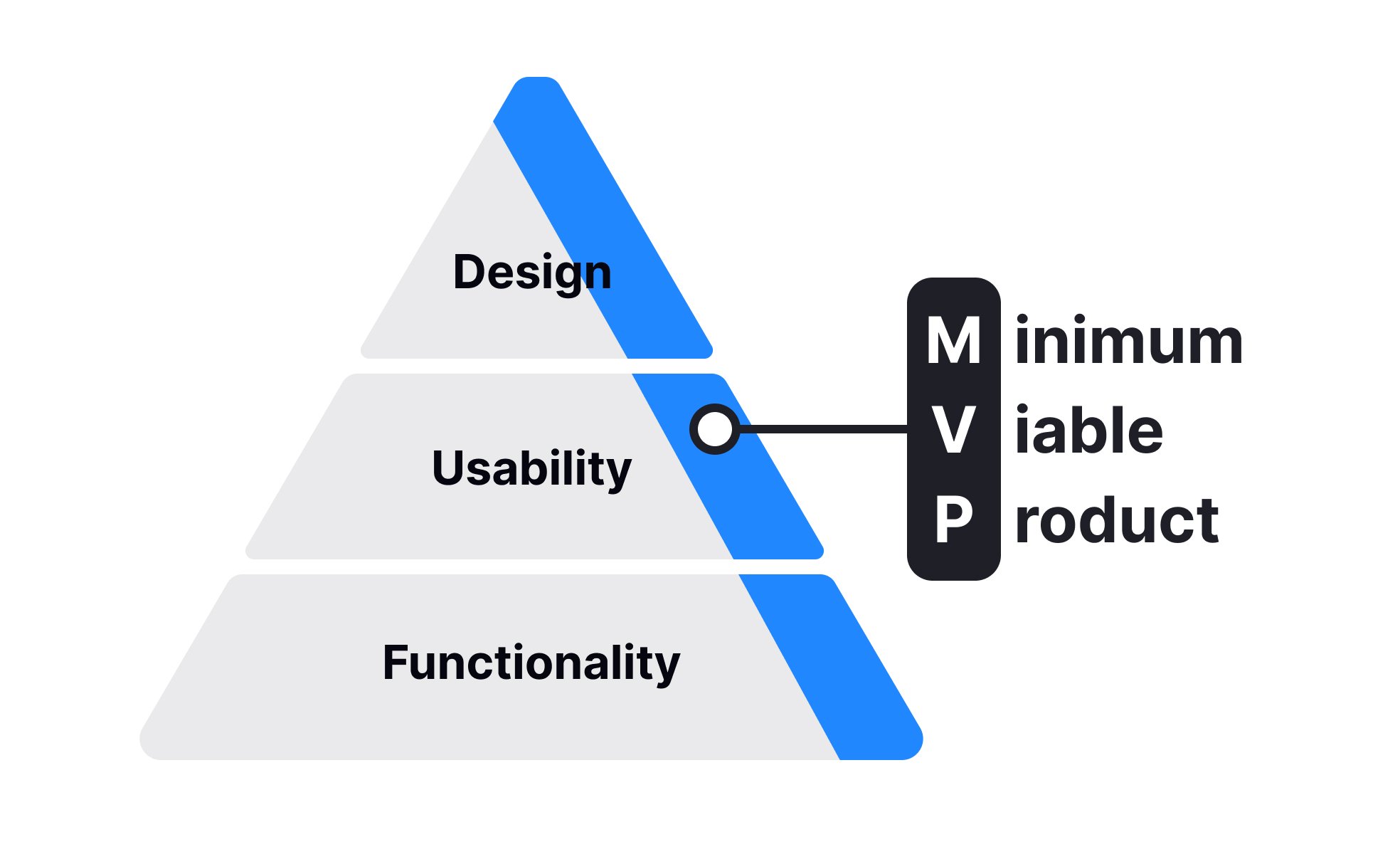
What is Minimum Viable Product?
Your team spends months building comprehensive features before getting any user feedback, only to discover that users don't want half of what you built and desperately need capabilities you never considered, wasting development resources on assumptions rather than validated user needs.
Most product teams confuse minimum viable product with barely functional demos, missing the strategic opportunity to learn about user behavior and market demand efficiently before committing significant resources to features that might not create value.
A minimum viable product (MVP) is the simplest version of a product that delivers genuine value to early users while enabling maximum learning about customer needs, market demand, and product viability with the least development effort and resource investment.
Teams building effective MVPs achieve 70% faster time-to-market, 60% better resource efficiency, and significantly higher product-market fit because they validate assumptions with real users before building comprehensive features that might not serve actual needs.
Think about how companies like Dropbox launched with just a simple video demonstrating file syncing to validate demand before building the complex infrastructure, or how Buffer started as a basic landing page to test interest in social media scheduling before developing the full platform.
Why Minimum Viable Product Matters for Smart Development
Your product development burns through resources and time building features that users don't adopt because you're optimizing for completeness rather than learning what actually creates value for your target market.
The cost of skipping MVP approaches compounds through every development cycle where assumptions go untested. You build products that miss market needs, discover user requirements too late when changes are expensive, and lose competitive advantage to teams that learn and adapt faster through systematic user validation.
What effective minimum viable product strategy delivers:
Faster market validation and user feedback because MVPs enable real user interaction and behavior observation rather than theoretical market research that might not predict actual adoption and usage patterns.
When you test with actual products that users can experience, feedback becomes specific and actionable rather than hypothetical opinions about concepts that users haven't actually tried.
Better resource allocation and development focus through learning what features actually matter to users before investing in comprehensive development that might not create proportional value or adoption.
Higher chances of product-market fit because MVP approaches enable iterative improvement based on user behavior rather than betting everything on initial product assumptions that might be incorrect.
Enhanced competitive positioning as faster learning cycles enable rapid adaptation to market needs while competitors spend longer building products based on untested assumptions.
Reduced development risk and waste through systematic validation that prevents expensive development of features that don't create user value or drive business outcomes effectively.
Advanced Minimum Viable Product Strategies
Once you've established basic MVP capabilities, implement sophisticated validation and learning approaches.
Multi-Hypothesis MVP Testing: Design MVPs that test multiple assumptions simultaneously while maintaining clarity about which learnings drive which product decisions and development priorities.
Audience Segmentation MVP Approaches: Create different MVP versions for different user segments to understand how product needs vary across customer types and market opportunities.
Iterative MVP Evolution and Learning Loops: Develop systematic processes for evolving MVPs based on learning rather than just launching once without ongoing validation and improvement cycles.
Competitive MVP Positioning: Use MVP approaches to test differentiation strategies and competitive positioning rather than just validating generic product concepts without market context.
No, a prototype is often not functional and used for internal testing, while an MVP is a working product used by real users.
Yes, many MVPs are released to real users to collect feedback, even if they aren’t fully developed.
No, an MVP should be reliable and usable, it just doesn’t include everything yet.
Step 1: Define Core User Problem and Success Hypothesis (Week 1)
Identify the single most important problem your product solves and create testable hypotheses about user behavior rather than trying to validate everything simultaneously without clear learning priorities.
This creates MVP foundation based on focused learning objectives rather than trying to test comprehensive product concepts that make it difficult to understand which elements actually create user value.
Step 2: Design Minimal Feature Set That Enables User Success (Week 1-2)
Build just enough functionality to let users accomplish their core objective while eliminating features that aren't essential for the primary use case you're validating.
Focus on user outcome achievement rather than feature completeness to ensure your MVP actually provides value worth testing rather than disappointing experiences that don't represent your product vision fairly.
Step 3: Establish Learning Metrics and Success Criteria (Week 2)
Define specific measurements that will indicate whether your MVP validates or invalidates your core assumptions about user needs and market demand.
Balance comprehensive data collection with focus on decisions that will guide next development steps rather than collecting interesting data that doesn't inform strategic choices.
Step 4: Launch MVP to Target User Segment (Week 2-3)
Release your MVP to real users who match your intended customer profile rather than internal testing that might not reveal genuine user behavior and adoption patterns.
Focus on quality user feedback rather than quantity of users to ensure MVP testing generates actionable insights about user needs and product direction.
Step 5: Analyze Results and Plan Next Development Iteration (Week 3)
Extract learning from MVP performance to inform next product development steps rather than just collecting feedback without systematic analysis that guides strategic decisions.
This ensures MVP approaches generate strategic value rather than just early product versions that don't influence development direction based on user evidence.
If your MVP doesn't generate clear learning about user needs, focus more on user problem validation rather than building minimal versions of predetermined solutions that might not address real user priorities.
Instagram's Photo-Sharing Focus
Instagram launched as a simple photo-sharing app after stripping away location features and other complexity from their original Burbn concept, discovering that users primarily valued effortless photo sharing with filters.
Results: Rapid user adoption, clear product-market fit, and successful acquisition by Facebook through MVP learning that identified the core value proposition users actually wanted rather than comprehensive features that diluted focus.
Airbnb's Simple Booking Validation
Airbnb started with a basic website for renting air mattresses during a design conference, testing whether people would actually pay to stay in strangers' homes before building comprehensive marketplace features.
Their MVP approach validated fundamental assumptions about peer-to-peer accommodation demand while revealing user concerns about trust and safety that informed product development priorities.
The Problem: MVPs that are so minimal they don't provide genuine value to users, leading to negative feedback about poor experiences rather than useful validation of core assumptions.
The Fix: Ensure MVPs deliver real value for the core use case you're testing rather than just demonstrating functionality without creating meaningful user outcomes and satisfaction.
The Problem: MVP development that takes so long it defeats the purpose of rapid validation, becoming comprehensive development projects rather than efficient learning experiments.
The Fix: Set strict time and scope limits for MVP development, focusing on speed of learning rather than product completeness that delays market validation unnecessarily.
The Problem: MVP testing that generates lots of user feedback but doesn't translate to clear decisions about product direction and next development priorities.
The Fix: Design MVP experiments around specific decisions you need to make rather than general user feedback collection that might not guide strategic choices effectively.
Create MVP approaches that maximize learning efficiency rather than just building minimal versions of products without strategic focus on validation objectives and user evidence collection.
What You'll Need: User research capabilities, rapid development resources, and 3-4 weeks for systematic MVP development and testing.
Week 1: Problem definition and hypothesis formation
Week 2: Minimal feature design and development
Week 3: User testing and feedback collection
Week 4: Learning analysis and next iteration planning
First step you can take today:
Identify one core assumption about user needs that your current product development depends on, then design a simple test to validate that assumption with real users before building more features.
Success metrics to track:
Learning velocity improvements, development resource efficiency, user validation accuracy, and product-market fit achievement through systematic MVP approaches.
Your minimum viable product should make user needs feel clearly understood rather than continuing development based on unvalidated assumptions about what users want and need.
Recommended resources
Courses

HTML Foundations

Mentorship Mastery

CSS Foundations
Lessons
Exercises
Projects

From Idea to Full-Stack Web App

SoloFaith - Spiritual Mentoring Platform

